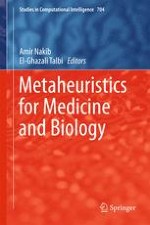2017 | OriginalPaper | Buchkapitel
6. Microscopic Image Segmentation Based on Based Branch and Bound and Game Theory
verfasst von : Amira Kouzana, Amir Nakib, Narjes Dogaz
Erschienen in: Metaheuristics for Medicine and Biology
Verlag: Springer Berlin Heidelberg
Aktivieren Sie unsere intelligente Suche, um passende Fachinhalte oder Patente zu finden.
Wählen Sie Textabschnitte aus um mit Künstlicher Intelligenz passenden Patente zu finden. powered by
Markieren Sie Textabschnitte, um KI-gestützt weitere passende Inhalte zu finden. powered by
